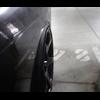Rb25 Tekkies Look Here.
Announcements
-
Similar Content
-
Latest Posts
-
By soviet_merlin · Posted
Every time I have to buy new tyres I question what actual difference it makes between running $40 tyres and $300 tyres and whether it's worth it. Because that's a massive difference to the wallet. But then I did go to a driving training at some point which also included emergency braking and swerving in the wet. In part I think it was meant to show people how bad it gets. Funnily enough what I took away from it is that I can go much harder than I thought in my car. I presume mostly because of decent tyres. Some of the other cars there were shocking to behold. And a bit scary that cheap tyres are probably a lot more common on the road than decent ones -
I'm pretty sure that is just straight AI generated word soup, where did you receive that ad (facebook)? They misspell Pirelli twice, no human eyes looked at that before it was posted. Incidentally, I am running the chinese pirellis on my V37 and they are.....OK....I didn't go looking for them, they were just what the shop had in stock in the tall size that car needs. LIke any brand, you really can't trust the brand's reputation to apply to every product they produce. Pirelli make good and crap tyres, all with the same logo stamped on them, and all with an attempt at price premium due to the brand
-
Welcome. It's unfortunate, but a lot of these vehicles just haven't had regular and thorough maintenance for a long while. Once its back up to scratch, it should provide fun and fairly trouble free motoring. Keep us updated with what you're doing with it.
-
By thomasLait · Posted
Ya thankfully I've been able to drive it, it's pretty fun however I noticed yesterday while driving to work that my left side of the car is very wobbly, like any bump I go over it jolts the whole vehicle and pulls the steering wheel, I kicked the wheel a few times once I got home and it's a very distinct metal on metal clunk, so I guess I need to take a look at my suspension, maybe it's a control arm bushing or tie rod
-









Recommended Posts
Create an account or sign in to comment
You need to be a member in order to leave a comment
Create an account
Sign up for a new account in our community. It's easy!
Register a new accountSign in
Already have an account? Sign in here.
Sign In Now